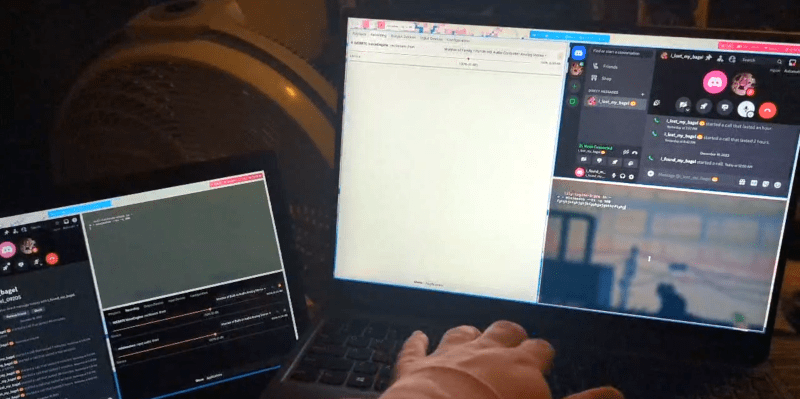Some hacks are useful and some are just… well… for the fun of it, and we can appreciate that. Take, for example, [Cool Blog’s] recent experiments with dialup networking. If you think about it, the BBS systems of yesterday have been replaced with more modern tools like Discord. So why not run modems using audio chat over Discord and get the best of both worlds?
This was both easier and harder than we would have expected. The first hurdle was the lack of any actual modems. Luckily, there are software modem emulators like minimodem that makes a PC soundcard work like a modem. It supports some basic protocols, and that’s probably a good thing since the digital audio channel is probably unable to support anything too sophisticated.
Using some crude audio routing 300 baud data did flow. Increasing the baud rate all the way to 2,100 worked reliably. Combining some more sophisticated audio flows and managing sockets with systemd made the process easier. The goal was to, eventually, telnet over the link but that never worked. We would guess that it could work if you spent enough time.
But the proof is in the pudding, and the basic idea works. Why do it? We can’t think of a good reason. But if you want to give it a shot, you can find what you need on GitHub.
Hams still use modems. While we tend to have a soft spot for retrocomputing gear, we don’t miss acoustic couplers at all.

















You can pry my US Robotics Sportster from my cold, dead, hands.
Dis-whaaaaaat?
Dis cord connects dis modem to dis wall jack?
“It supports some basic protocols, and that’s probably a good thing since the digital audio channel is probably unable to support anything too sophisticated.”
Why? Even 56K only requires 4kHz of audio bandwidth, and the signal processing is simple by today’s standards.
Only 33.6k can work on any line.
https://www.laits.utexas.edu/~anorman/long.extra/Student.F98/modem/56k.htm#:~:text=56k%20connections%20begin%20analog%2C%20are%20converted%20to%20digital%20and%20are%20not%20converted%20back%20to%20analog%20at%20the%20service%20provider.
Guess some tech is lost on the younger generation. As soon as you have serial over modems you can just run ppp to get you IP network running over it. And then you can telnet, ssh or browse over it just fine (but a bit slower)
Time to dig out the floppy with SuperZmodem….
The obvious thing to run over it is the discord client…
Unlike a phone line, which was (later, pretending to be) a circuit switched bandwidth-limited line with a certain fidelity, there’s no guarantee that any data signal at all will survive lossy digital voice compression, even if we assume you never run into odd issues like maybe timing. Those codecs are just made to return a result that sounds similar to the original human voice; they can even do a poor job with music much less data.
Even on the old phone network, you only got 56 with digital communication, although it used the same line – it was more like 30 with pure analog audio, considering the bandwidth wasn’t purely 0-4khz as there was real filtering on it. The telephone network for awhile was 8kHz sampling and 8-bit samples, meaning on the back end 64kbit of information flowed, 8 of which was reserved, so even if your provider supported it you could only approach the nominal 56k.
I guess that’s one way to set up a VPN
I guess all Internet voice chat services, including Discord, use some type of compression – either general-purpose sound compression, or algortihms specialized for human voice.
So it’s quite impressive that it worked.
Also Krisp noise reduction that seems to actively try to cancel out music and lots of audio that isn’t likely someone chatting on voice.
That can be disabled
I remember on one of my discord servers, we played around with sending sstv over voice chat
Descent hear I come!
You can also use fldigi to send text, images, and small files over voice chat. It’s meant for use on ham radio, but any of the modes that work on HF should be robust enough to handle the digital compression. There is also an android app called AndFlmsg that’s compatible with many of the fldigi modes.
Why do this?
Maybe there is some application where tethering is desired but not allowed?
It kind of reminds me of ideas I had before I had an unlocked phone… although not exactly.